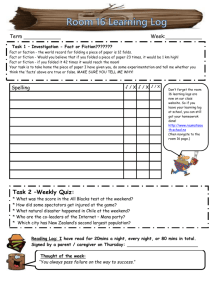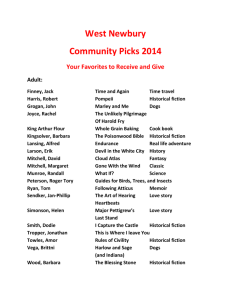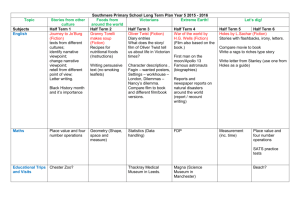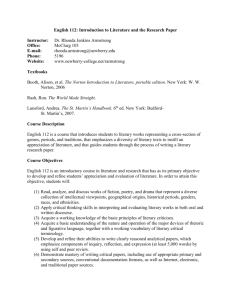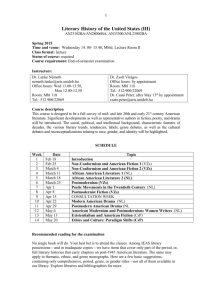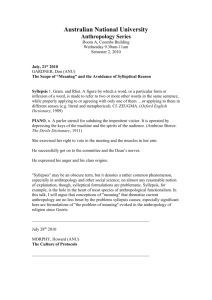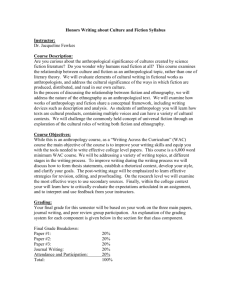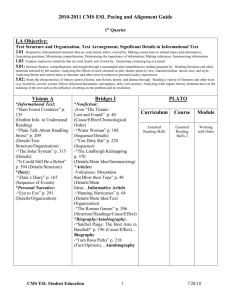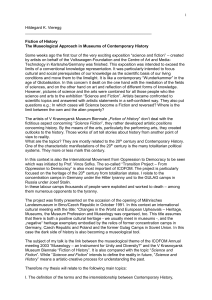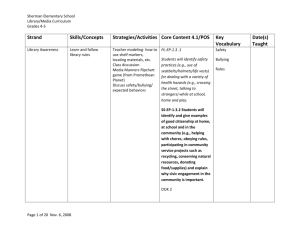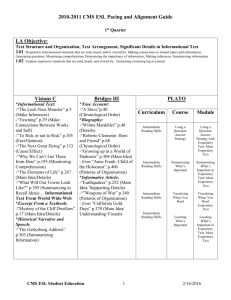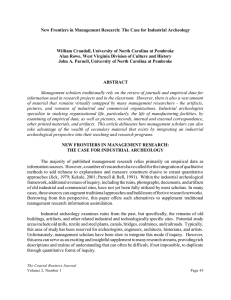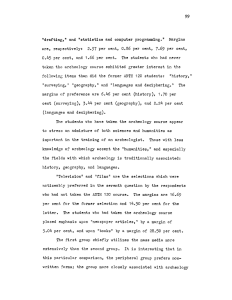Historical Fiction for Young People
advertisement
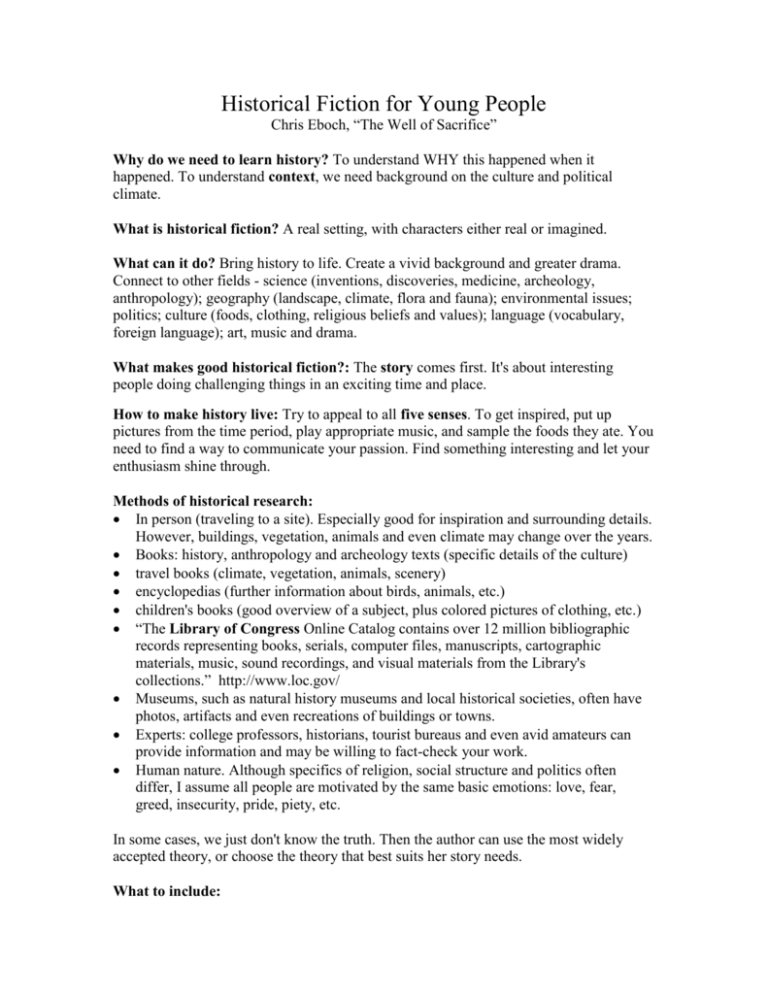
Historical Fiction for Young People Chris Eboch, “The Well of Sacrifice” Why do we need to learn history? To understand WHY this happened when it happened. To understand context, we need background on the culture and political climate. What is historical fiction? A real setting, with characters either real or imagined. What can it do? Bring history to life. Create a vivid background and greater drama. Connect to other fields - science (inventions, discoveries, medicine, archeology, anthropology); geography (landscape, climate, flora and fauna); environmental issues; politics; culture (foods, clothing, religious beliefs and values); language (vocabulary, foreign language); art, music and drama. What makes good historical fiction?: The story comes first. It's about interesting people doing challenging things in an exciting time and place. How to make history live: Try to appeal to all five senses. To get inspired, put up pictures from the time period, play appropriate music, and sample the foods they ate. You need to find a way to communicate your passion. Find something interesting and let your enthusiasm shine through. Methods of historical research: In person (traveling to a site). Especially good for inspiration and surrounding details. However, buildings, vegetation, animals and even climate may change over the years. Books: history, anthropology and archeology texts (specific details of the culture) travel books (climate, vegetation, animals, scenery) encyclopedias (further information about birds, animals, etc.) children's books (good overview of a subject, plus colored pictures of clothing, etc.) “The Library of Congress Online Catalog contains over 12 million bibliographic records representing books, serials, computer files, manuscripts, cartographic materials, music, sound recordings, and visual materials from the Library's collections.” http://www.loc.gov/ Museums, such as natural history museums and local historical societies, often have photos, artifacts and even recreations of buildings or towns. Experts: college professors, historians, tourist bureaus and even avid amateurs can provide information and may be willing to fact-check your work. Human nature. Although specifics of religion, social structure and politics often differ, I assume all people are motivated by the same basic emotions: love, fear, greed, insecurity, pride, piety, etc. In some cases, we just don't know the truth. Then the author can use the most widely accepted theory, or choose the theory that best suits her story needs. What to include: Except with omniscient viewpoint, all information must be from the point of view character's POV. You can't point out what they don't have. (For example, in The Well of Sacrifice I can not point out that the Maya don’t have wheeled vehicles. You must trust the readers to notice such things for themselves.) Details should be relevant, not just interesting to the author. They should fit naturally into the story. Historical fiction should not be an excuse to lecture within a fictional framework. Be especially careful with technical information, such as how machines work. This can get tedious. Don't stop the action for details. Painful truths: Every group in history had bad sides—sexism, racism, slavery, violence, etc. Try to find balance by looking at both the good and the bad in ALL sides. We're all human, we all have flaws. Differences of opinion drive history.




